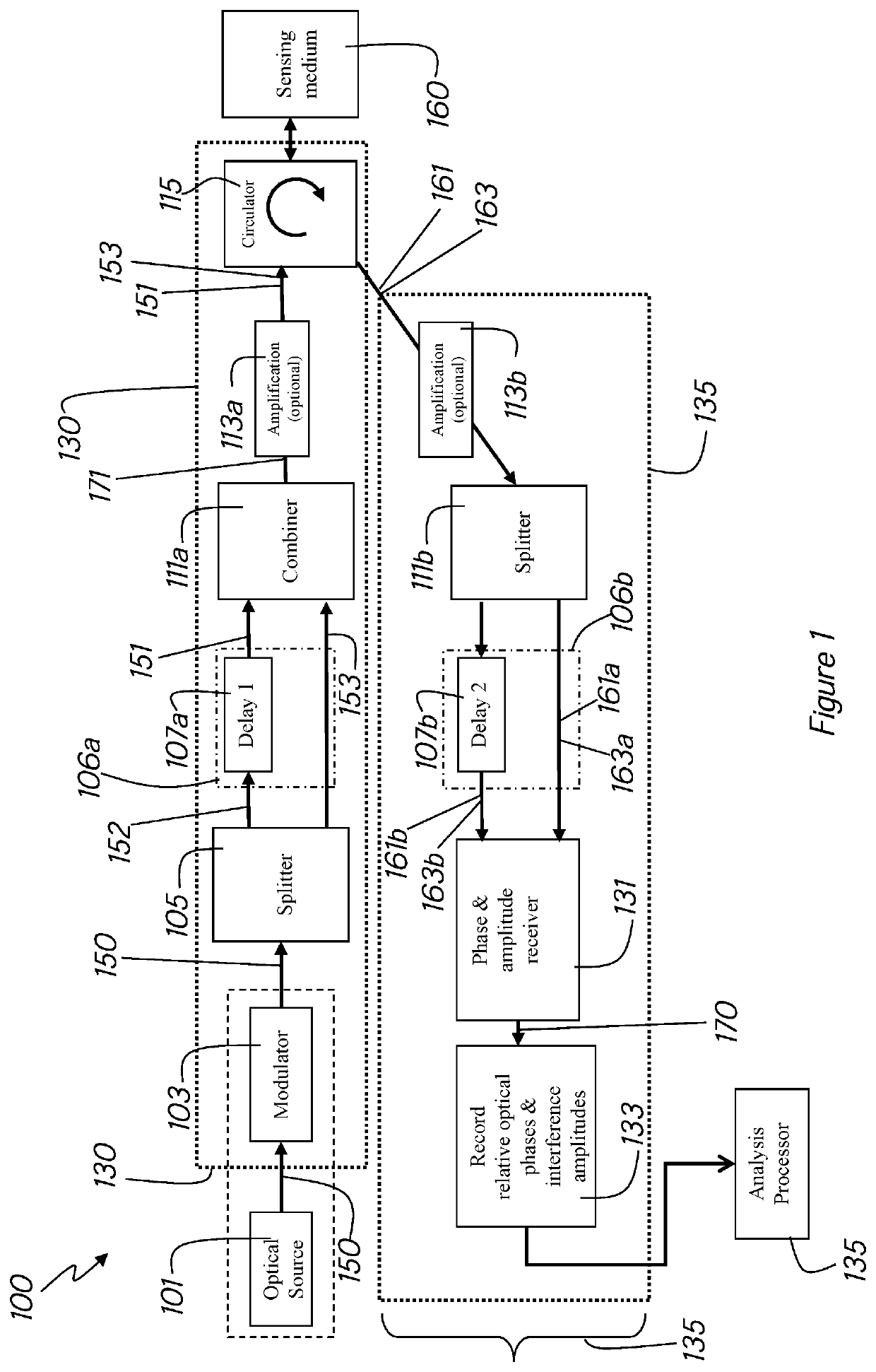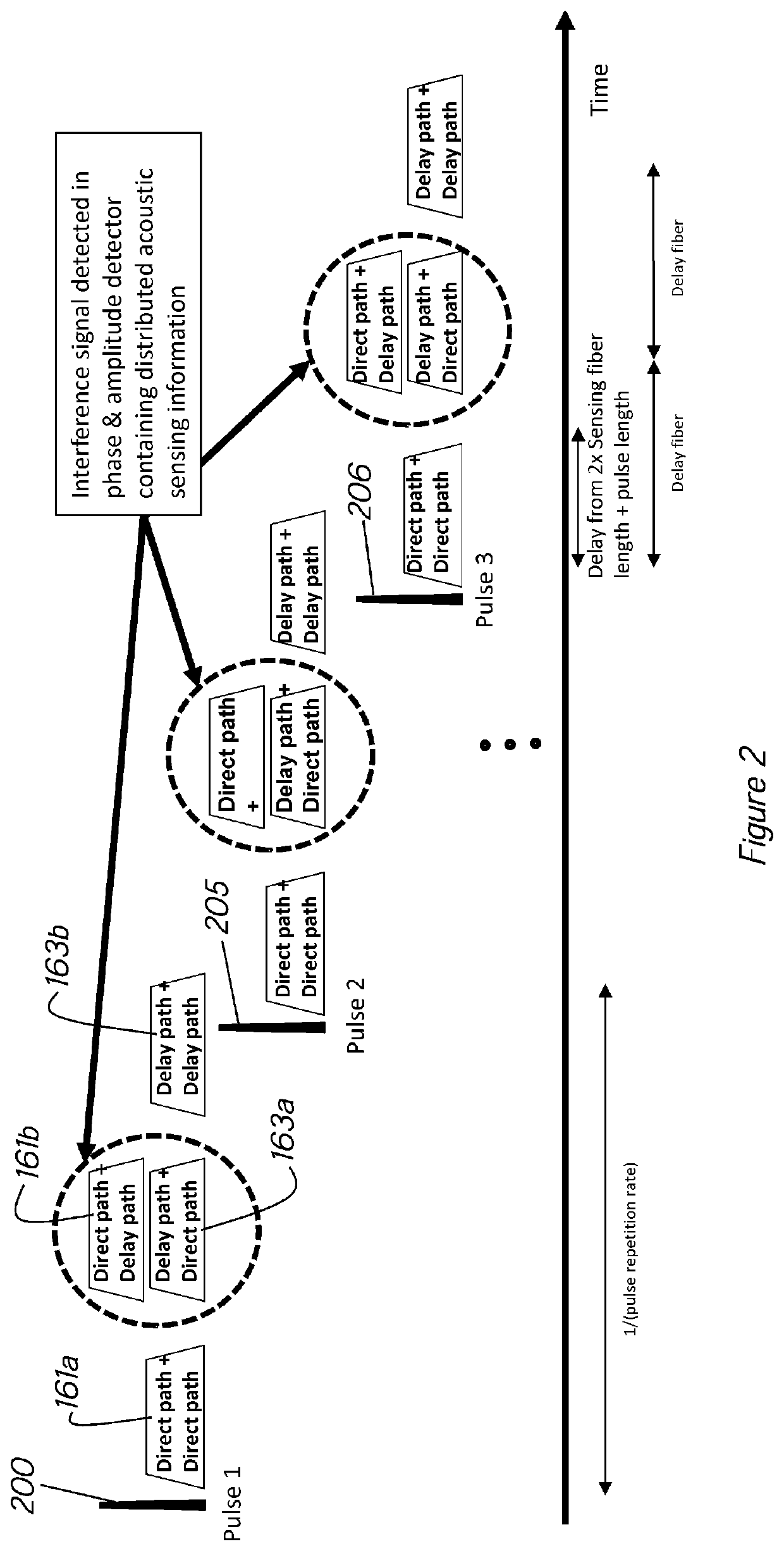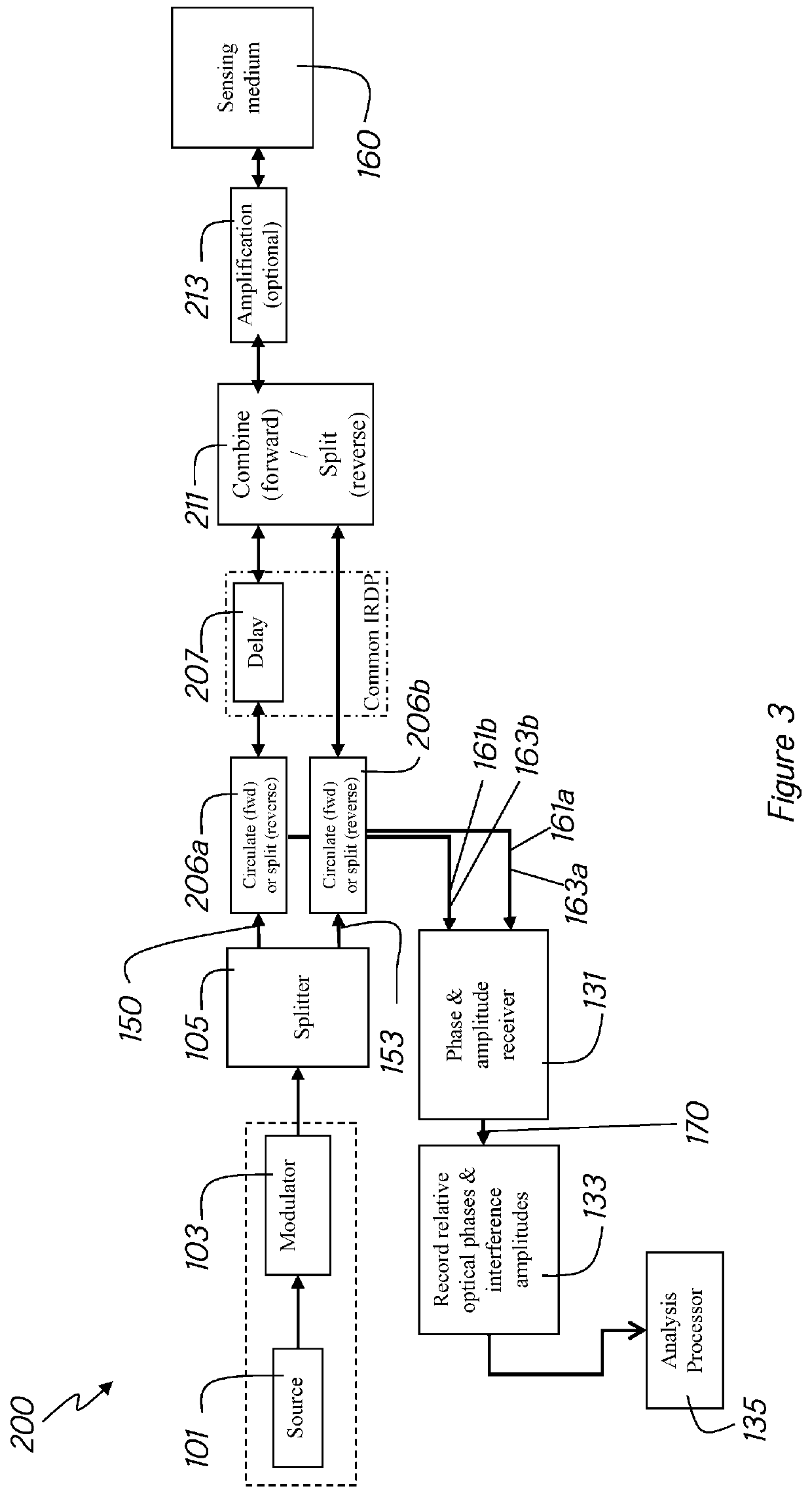Distributed optical sensing systems and methods
a distributed sensing and optical path technology, applied in the field of optical path length change measurement systems and methods, can solve the problems of inability to accurately and unambiguously measure optical path length change, inability to provide a distributed sensing method, and higher cost and complexity of the system being used
- Summary
- Abstract
- Description
- Claims
- Application Information
AI Technical Summary
Benefits of technology
Problems solved by technology
Method used
Image
Examples
Embodiment Construction
[0146]It should be noted in the following description that like or the same reference numerals in different embodiments denote the same or similar features.
[0147]Disclosed herein are systems and methods for quantitative distributed acoustic sensing (DAS) systems for quantitative distributed measurement of optical path length changes along a sensing medium such as, for example an optically transparent medium such as an optical fiber.
[0148]The DAS system disclosed herein comprises a broadband optical source and phase and amplitude measurement capable of accurately measuring phase. The broadband optical source may have a coherence time, τcoh and, interchangeably, a coherence length, lcoh, defined as the optical path length corresponding to propagation in a medium for a time equal to the coherence time. There is no in-principle lower bound on the coherence length of the source when used in the systems and methods disclosed herein. Coherence time, τcoh, is calculated by dividing the cohe...
PUM
 Login to View More
Login to View More Abstract
Description
Claims
Application Information
 Login to View More
Login to View More - R&D
- Intellectual Property
- Life Sciences
- Materials
- Tech Scout
- Unparalleled Data Quality
- Higher Quality Content
- 60% Fewer Hallucinations
Browse by: Latest US Patents, China's latest patents, Technical Efficacy Thesaurus, Application Domain, Technology Topic, Popular Technical Reports.
© 2025 PatSnap. All rights reserved.Legal|Privacy policy|Modern Slavery Act Transparency Statement|Sitemap|About US| Contact US: help@patsnap.com



